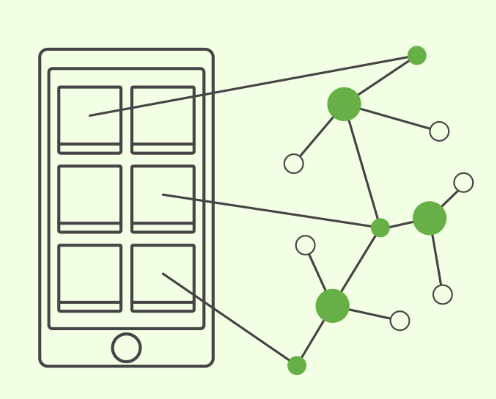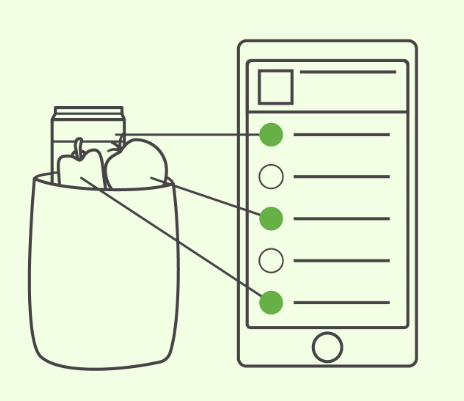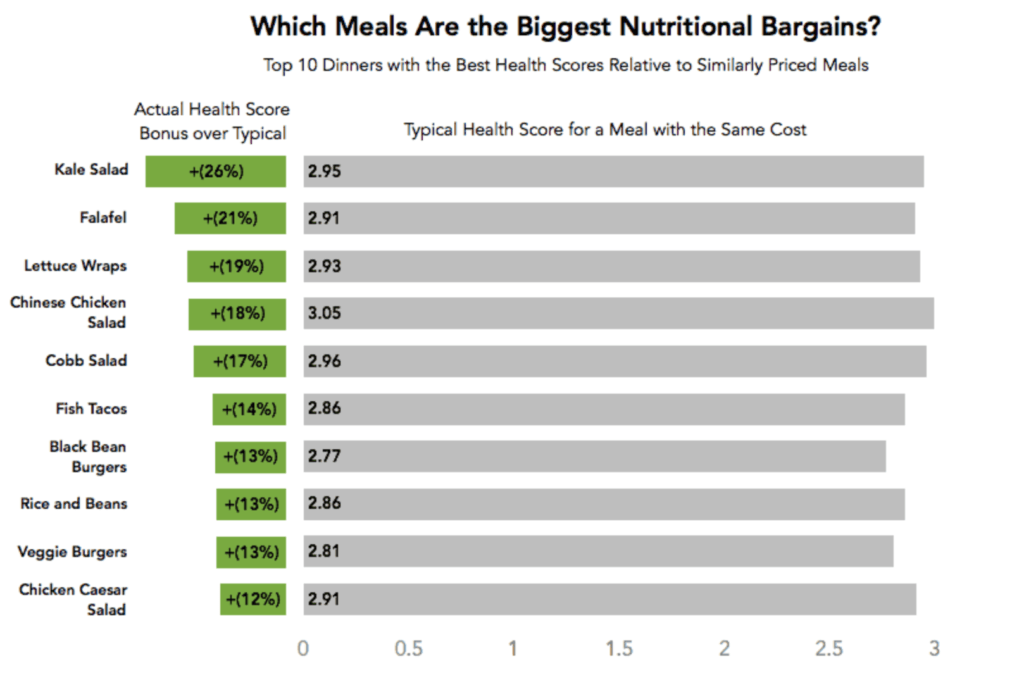Your Personalized Dinner is Served

Wellio: your personal nutritionist, grocery shopper and chef
Capitalizing on the convenience and wellness consumer trends, Wellio proposes an intelligent platform that helps its customers plan, shop and prepare their personalized meals. Its mission is to “decode how meals are prepared and enjoyed at home.”[1].
Wellio is currently in beta phase after having raised $3 million and operates in selected parts of the United States only (the company is based in San Francisco) [2,3]. Kraft Heinz acquired Wellio in November 2018, as a platform to kickstart its new digital hub [2,3].
Value Proposition
Wellio’s value proposition is to be a personal nutritionist, grocery shopper and chef all at once to provide an integrated healthy and convenient dinner solution. It proposes a two-hour intelligent ingredient delivery service without any subscription or commitment, which differentiates it from its competitors Blue Apron and Hello Fresh.
Machine Learning
Wellio currently serves its customers through five steps and each of these steps rely on machine learning [1].
As Wellio places an order and delivers grocery, it applies a number of “food principles” [1]:
- Fresh: as it translates recipes into grocery shopping, Wellio will chose fresh over frozen or canned goods, as practicable
- Less waste: Wellio will select goods with resealable packaging, as practicable
- Cost efficiency: Wellio automatically choses the best quality for price
- Quality: Wellio selected the highest quality ingredients from selected brands
- Packaged food: Wellio screens for foods that are simple (less ingredients) and contain less preservatives
In terms of cost efficiency, Wellio has accumulated data (see chart below [4]) to understand which meals offer the best cost for nutrition.
Wellio’s technological aspirations are two-fold: (i) understand home chefs and (ii) learn the world of food, through artificial intelligence [1].
Understanding home chefs
As customers’ input their meal preferences and health goals, Wellio’s technology proposes a curated list of recipes. Recommendations improve as users provide data to the platform in the form of orders, ratings and feedback.
Learning the world of food
Wellio strives to transform “raw data” such as web recipes, product quality, nutrition information and retail products into “smart data” to “understand the art of cooking and the science of nutrition.”[1]
Wellio is effectively using machine intelligence to offer its customers a quality personalized experience and is building a platform that will improve over the years, as data from customers accumulates.
Other Steps
Over the short term, one could imagine a service in which users have even more control on what they ingest by being able to select specific amounts of macro-nutrients, vitamins and calories for Wellio to invent a corresponding recipe.
Another action Wellio could take on the medium term could be to allow its users to source recipes, ingredients or meal plan ideas from other online users in order to create a Wellio community.
Over the medium term, Wellio could take the nutritionist aspect of their platform a step further by recommending to their users’ recipes and meals based on their DNA and medical tests data. A user might also be able to input a specific medical condition for Wellio to recommend the most appropriate meals to help the customer’s recovery.
Open Questions
A potential challenge that Wellio might have to overcome has to do with the quantity of data it accumulates – is Wellio used enough to have a volume of data that will truly enable the platform to learn from its customers and become smarter? What does the partnership with Kraft Heinz add to Wellio and its data pool?
Additionally, as Wellio strives to minimize waste, could it do more in terms of ecological impact? Wellio currently tracks the packaging, the nutritional content and the price of the grocery products – could we imagine a world in which Wellio also tracks the inputs that went into these products to promote local growers and farmers?
[749 words]
[3] https://thespoon.tech/kraft-heinz-acquires-food-ai-startup-wellio-kickstarts-new-digital-hub/
[4] http://www.getwellio.com/ranking-least-nutritious-meal-dollar/









This is an interesting concept and I’d be curious to see how it pans out over the coming years. One thing I would like to see is how adaptable Wellio is to data put into the app. Will they try to loop in nutritionists or rely on data from their users. A lot of information is necessary, as you point out above, but the quality is definitely of the inputs is something I’d be concerned about as part of the Wellio team. Also, is Wellio going to optimize its recommendations for each person (based on only their data) or will they try to generalize recommendations on how it views its users across the board?
This is a really cool concept. The field of personalized nutrition is beginning to take off, and it’s this type of machine learning that is a key driver. One concern I have with Wellio (and other similar companies) is that they may get too excited by how many different things they could do with machine learning. The value proposition discusses being a nutritionist, grocery shopper, and chef all in one, and the blog later goes on to describe shopping parameters around packaging and waste. While these are all potentially great value-adds, I would think a startup would want to focus on being great at one, maybe two, value-adds to begin with.
This is an interesting space within nutrition food that Wellio is carving for itself. One thing that I thought Wellio could do is to engage in a subscription model because it needs to quickly gather as much data as possible in a short time frame in order for its machine learning algorithm to work effectively. I would also be curious to know the level of personalization that Wellio is striving for with the amount of data that they have currently. Is it possible for them to really personalized on a customer level basis or will they segment customers into different groups and each group will receive the same personalized nutrition?
The article focuses on a very interesting point to use machine learning to prepare the necessary ingredients for the home chef. One thing I though from the application design perspective is that actually the current recipes are countable, the main job the system should do is to analyze the customers’ appetite and recommend the recipe according to their needs. In terms of how to quickly collect initial data is to promote in the “gourmet” community first, and let the users to upload their favorite recipes, then to use machine learning to provide them new foods to select “like” or “dislike” to train the system.
This is such a great concept! I am new to the cooking world and would love to use this. I think its interesting that Wellio is taking a concept started by Blue Apron/Hello Fresh and advancing the product to become fully ingrained in the consumer’s life. I do wonder if they are trying to be too many things at once – the combination of personalization and complicated logistics much be very challenging. I also wonder if the “no commitment” aspect will eventually be detrimental to the business. I see this as as a constant part of someone’s life and think they may need to add a loyalty component so consumers remain engaged – this would also help with the data problem you identified in the first question. If a customer is consistently using it, Wellio is collecting more data and providing a better experience for that person. However, I generally think this is a great business idea. I see the barriers to cooking a meal as the time needed to find a recipe and shop for groceries. This solves these problems with the added benefit of nutrition.
Great read, thank you C! I have the same question around the value of their machine learning at possibly low volumes. As a consumer I’m not sure that I can appreciate the calibration period of their machine learning engine and may choose to leave the service prematurely, in that case. As part of the Kraft Heinz family I would also support partnerships to enrich their data set. Thank you!
Great read! Wellio’s approach to use machine learning to take into account existing inventory of food supplies is an innovative twist that might differentiate itself from the numerous other players in this sector. As mentioned above, the fact that Wellio isn’t requiring subscriptions can be a double-edged sword – possibly can help with acquiring clients but there could be adverse cash flow impacts that could make continued investments in data science more tenuous.
Thanks for the great article. I think that Wellio will get more efficient as it grows its user base and accumulates more data. It is a natural learning curve for startups of this kind, however it would be interesting to explore if Wellio could utilize Kraft Heinz’s extensive data to make more informed recommendations and ordering decisions. With regard to sustainability, Wellio can start with making all of its packaging be recyclable or compostable. I think there are trade-offs with focusing on local growers though – depending on geography, certain foods will only be available during certain seasons and there is always a cost trade-off with food. Some people are more focused on the sustainability, local foods while others are more cost-conscious. I think that Wellio should focus on its target market and what that market cares most about.